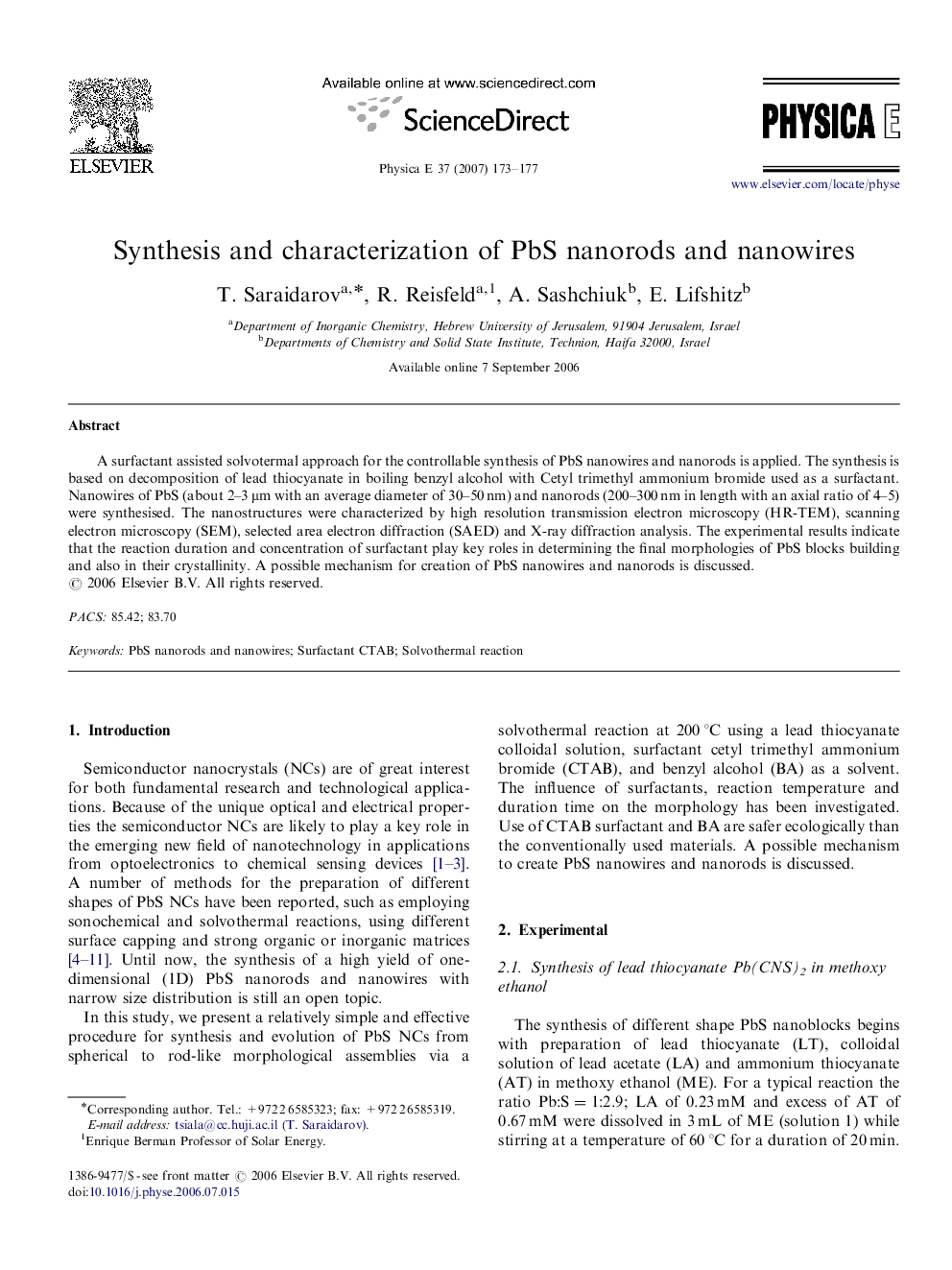| Article ID | Journal | Published Year | Pages | File Type |
|---|---|---|---|---|
| 1547218 | Physica E: Low-dimensional Systems and Nanostructures | 2007 | 5 Pages |
A surfactant assisted solvotermal approach for the controllable synthesis of PbS nanowires and nanorods is applied. The synthesis is based on decomposition of lead thiocyanate in boiling benzyl alcohol with Cetyl trimethyl ammonium bromide used as a surfactant. Nanowires of PbS (about 2–3 μm with an average diameter of 30–50 nm) and nanorods (200–300 nm in length with an axial ratio of 4–5) were synthesised. The nanostructures were characterized by high resolution transmission electron microscopy (HR-TEM), scanning electron microscopy (SEM), selected area electron diffraction (SAED) and X-ray diffraction analysis. The experimental results indicate that the reaction duration and concentration of surfactant play key roles in determining the final morphologies of PbS blocks building and also in their crystallinity. A possible mechanism for creation of PbS nanowires and nanorods is discussed.
